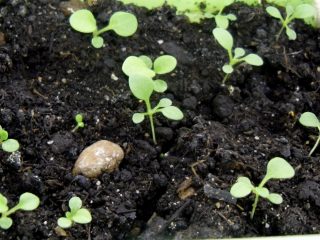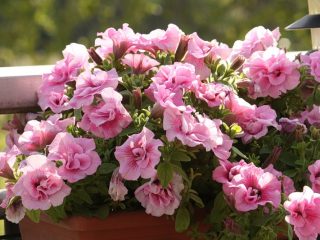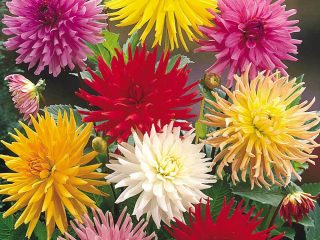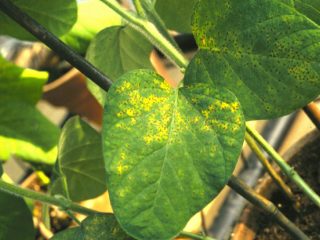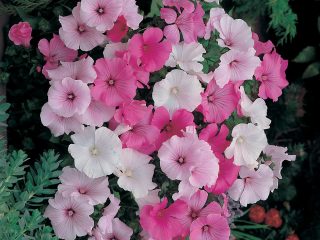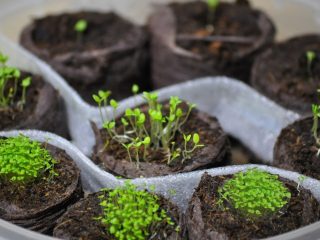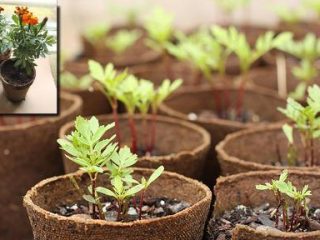Content
Amaranth tricolor gets its name from its multicolored petals and leaves. A bright and beautiful plant has been successfully cultivated in temperate climates over the last decade. Neat bushes that look like flashes of fireworks attract everyone's attention and delight the eye.

Tricolor amaranth is a popular ornamental plant, widely used in modern landscape design.
Description of amaranth tricolor
Tricolor amaranths are medium- and tall-growing plant varieties with a rapid rate of formation. Lush bushes with straight, strong stems often reach a height of 1 m or more. The leaves of the plant are large, elongated, ovoid in shape.

The inflorescences look like variegated pipidastras
The fruit is an achene with black shiny grains.The flowers of various varieties of tricolor amaranth have a rich red-yellow, orange-ocher or green-burgundy color.
The best varieties
Amaranth tricolor comes from India and Malaysia. Based on natural species, numerous varieties of plants have been bred, striking in the perfection of their forms and riot of colors.
Amaranth tricolor Brazilian Carnival
The most common variety of tricolor amaranth, Brazilian Carnival, even looks elegant in the photo. Erect stems, reaching 50 cm in height, are densely covered with elongated leaves. The picturesque bush has a pyramidal shape.

The Brazilian carnival looks impressive in solo and group plantings on lawns and flower beds
Amaranth tricolor Sheer perfection
The Perfection variety is famous for the fact that it retains its decorative appearance throughout the entire warm period, right up to the onset of frost. The plant is 50 cm high and has strong stems around which large leaves are arranged in a spiral.

The foliage and petals of the variety Itself Perfection are painted in all the variety of shades of yellow, orange, red and green.
Amaranth tricolor Red octopus
The bushes of the Red Octopus plant do not exceed 40 cm in height. The variety is suitable for creating group plantings on the lawn, the background of mixborders and edgings.

The peculiarity of the Red Octopus variety is the predominance of scarlet petals and long wavy leaves.
Amaranth tricolor Valentina
Valentina belongs to the tall varieties of amaranth. The stems reach 1-1.7 m in height. The leaves, shoots, and inflorescences of the plant have a deep purple color.

The leaves and inflorescences of the Valentina variety are eaten in fresh, dried, cooked form, as well as the seeds of the plant.
Amaranth Aurora
The Aurora variety is characterized by expressive petals with wavy edges. Each variety of culture has its own color characteristics.

The color of the flowers of the Aurora variety varies from plain lemon to red-yellow
Amaranth Perfecta
The color of the flowers of the Perfecta variety is dominated by emerald tones. The petal leaves, pointed at the ends, are also noticeable in various gradations from the red-yellow palette.

Flowers of the Perfecta variety are a noticeable element of landscape design, attracting attention with their original coloring
Amaranth Early Splendor
The tall variety Erli Splendor has burgundy foliage. The flower petals have an unusual pink-crimson color.

The stems of the Erli Splendor variety, decorated with large inflorescences, often reach 1.2 m in height
Amaranth Molten Fire
Molten Fire differs from other varieties in its combination of terracotta-red foliage at the top of the plant and bronze-green at the bottom. The unusual combination gives special attractiveness to the decorative culture.

Medium-sized Molten Fire plants with dark foliage serve as a good background for crops with light and bright flowers
Amaranth Magnificent
Magnificent refers to the early varieties of tricolor amaranth. The plant has shiny leaves-petals of a coral color with pronounced veins. The height of the pyramidal bush is 35-55 cm.

Bright flowers of the Magnificent variety are collected in colorful dense panicles
Amaranth Amazing
The variety Amazing is characterized by such a feature as wide oval-shaped foliage. The top of the plates is scarlet, the bottom is reddish with a brown tint.

The colorful bushes of the Amazing variety highlight the rich color of evergreens (spruce, juniper, cypress)
Planting tricolor amaranth
Tricolor amaranth is propagated in several ways. Gardeners consider the most effective:
- sowing seeds;
- propagation using seedlings.
Growing the Brazilian Carnival variety and other types of tricolor amaranth from seeds is the most accessible method. Sowing is organized in early May, when the temperature rises to +12-14 0C. In a greenhouse, the plant can be planted in March or April. The seeds are deepened into the soil by 3.5 cm. After germination, agricultural technicians recommend thinning, making sure that small “windows” remain between the specimens.
In the case of growing a crop with seedlings, seed material is sown in containers with moist, light soil in early spring. To create a greenhouse effect, the container is covered with cellophane or glass. After germination, the container (pots) are placed in a warm, sunny place, after removing the protective film. Two weeks later, the seedlings are planted in separate peat cups. When the threat of frost has passed, the formed bushes are transferred to open ground.
When planning to transplant seedlings or sow seeds directly on the site, a number of sequential procedures are performed.
- Pre-clean the area of weeds.
- Seedlings are planted in rows, maintaining a distance of 12 cm between specimens and 45 cm from one row to another.
Immediately after planting, the row spacing is loosened. The soil on the site is watered with warm water with a biostimulant to accelerate plant growth.
Features of care
The decorative crop is unpretentious to growing conditions and does not require care.Amaranth tricolor can be grown in most parts of the country.

At first, transplanted plants require painstaking care.
Young bushes need regular traditional agrotechnical work, which includes:
- regular weeding;
- frequent loosening of row spacing;
- timely soil moisture.
Approximately once a month, fertilizing of the plantings is organized. Ready-made mineral complexes or mullein solution are used as fertilizer. Immediately after transplantation, tricolor amaranth grows very quickly (up to 7 cm per day). If there are a lot of bushes, they are thinned out, and the removed greens are eaten.
Reproduction
For effective reproduction, tricolor amaranth needs a short day; if it is long, the plant will not produce seeds. Agricultural technicians advise not to collect seed material yourself, but to purchase it in a specialized store. The fact is that when growing an ornamental crop on a plot, it may cross-pollinate with weeds. Consequently, the plant loses its decorative qualities.

Flowering of all varieties of tricolor amaranth lasts from early summer until late autumn
Diseases and pests
Amaranth belongs to the category of ornamental plants that exhibit disease resistance. But sometimes a combination of unfavorable factors (cold weather, frequent rains) undermines the immunity of the crop. Fungal diseases can cause damage to tricolor amaranth plantings.To disinfect bushes, gardeners use preparations containing:
- copper sulfate;
- colloidal sulfur;
- copper oxychloride.
In cold summer conditions, an increase in insect populations is observed. Weakened plants can be occupied by the following pests:
- aphid;
Small arthropods slow down the growth of bushes, damage the integrity of leaves, and damage stems and flowers
- weevil.
Bugs with long proboscis suck out plant juices, the affected bushes wither, flowers and leaves dry out
The drugs Actellik and Karbofos will help get rid of harmful insects. When using products, it is necessary to treat not only the upper part of the leaf blades, but also the lower part, where the accumulation of eggs is located.
Amaranth tricolor in landscape design
Tricolor amaranth fits harmoniously into a garden dominated by bright, eye-catching plants. Another option for landscape use of an ornamental plant is an accented zone on a personal plot or public area (in a park, square, near residential buildings).

Variegated flowers can be placed alone or in groups

A hedge of tall plants looks impressive
Large-scale planting creates the effect of a bright flame. Landscape designers often use this technique to highlight dark corners of the garden.

Amaranth inflorescences are used in floristry when composing bouquets and design compositions

The picturesque plant favorably emphasizes the lush greenness of the lawn grass
Conclusion
Tricolor amaranth has a very presentable appearance and does not require complex care.It is a source of useful green mass and seeds used in the preparation of many dishes and traditional medicine. Bushes with high decorative qualities are a popular element of landscape design and a bright component of flower bouquets.
Reviews of tricolor amaranth


